How to get the perfect night's sleep
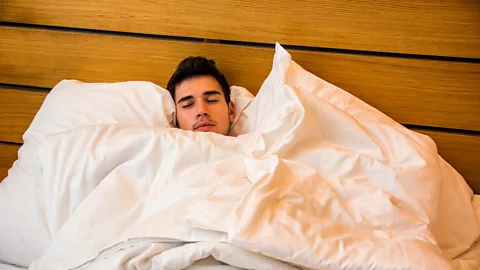 Alamy
AlamyFrom natural-fibre bedding to a suitable mattress and a calming colour scheme – what are the elements that can help us sleep well?
We've seen a rise of interest in the health benefits of sleep for more than a decade. A marker of this is World Sleep Day, founded in 2008, and held every Friday before the spring equinox in the northern hemisphere. It acknowledges the problems many have sleeping – sleep deprivation is thought to adversely affect economic productivity as well as wellbeing – and draws on the knowledge and research of sleep medicine experts worldwide to alleviate these difficulties. It's now widely believed that some habits can improve sleep patterns, such as sticking to a regular routine, and avoiding time spent on screen just before bedtime.
Now there's growing evidence, too, that bedding has an impact on quality of sleep. In recent years a far greater choice of bedding has sprung up in the UK. People are making considered choices when buying everything from bedlinen to mattresses. While many of us once settled for basic bedding, bedlinen is now hugely varied, and designed to blend artfully with any style of bedroom. Aesthetics aside, consumers are increasingly investing carefully in mattresses, bedlinen, blankets and pillows, all calibrated to optimise sleep.
"In the UK, we've become obsessed with sleep," says Mark Tremlett, co-founder of Devon-based Naturalmat, which makes organic and sustainable mattresses and beds. "A growing interest in wellness, once mainly associated with exercise but now also with sleep, is generating more interest in sleeping well. Covid-19 made people more conscious of their health, including sleep. During the pandemic, people became more aware of the mattress market because of a slew of e-commerce brands that sold 'bed in a box' mattresses and beds delivered to homes."
 Naturalmat
NaturalmatWhile many welcomed such convenience, Tremlett believes it's imperative to try out a new mattress in person. "We're all different," he tells BBC Culture. "People need to find the right combination of mattress that supports proper alignment – keeping your spine straight – and comfort. This is key to achieving a good night's sleep. The only science relating to correct mattress tension is a person's weight. Heavier people need to be supported by a firmer mattress. If you're sleeping so your body forms a hollow in the mattress and your spine isn't straight, that's not good."
According to Dr Allie Hare, consultant in sleep medicine at Royal Brompton Hospital, London, "there's evidence that supportive mattresses and pillows improve sleep quality, especially for individuals with chronic back or neck pain."
More like this:
This bedding boom is a global phenomenon, judging by recent sales figures. A report published last year by Globe Newswire, which facilitates the distribution of corporate press releases and financial disclosures, explored the growth of the sector.
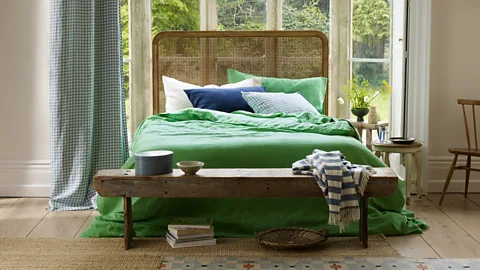 Piglet in Bed
Piglet in BedBolstering this sector are brands who manufacture bedding made of sustainable or organic materials only. Tremlett traces their rise to the early Noughties when sustainability was embraced in earnest by mainstream society.
The catalyst for founding Naturalmat was Tremlett's observation that mattresses in expensive boats were made of cheap polyurethane foam slabs lacking support. The company originally specialised in mattresses for yachts, before focusing on the homes market. Bedding with synthetic fibres, he points out, is thought to inhibit good sleep but sells well as it's cheaper than high-end mattresses made of natural materials.
However, synthetic bedding was looked upon favourably until the 1980s. Terence Conran's Habitat stores – which first introduced duvets, or "Continental quilts" as they were then called, to the British public in the 1960s as a labour-saving alternative to traditional blankets and sheets – extolled duvets with synthetic fillings. Its 1983-1984 catalogue declared: "New synthetic fillings can capture the lightness and warmth of traditional duvets yet are inexpensive, non-allergenic and completely washable."
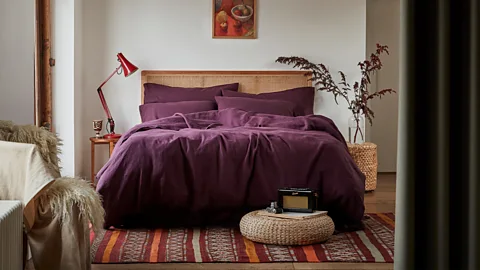 Piglet in Bed
Piglet in Bed"Around 95% in the UK currently sleep on synthetic mattresses," says Tremlett. "But now relatively affordable bedding made of natural fibres is more widely available, manufactured by companies factoring in the importance of good sleep."
Fortuitously for bedding brands endorsing sustainability, natural fibres and bedlinen make for good bedfellows. It's widely acknowledged that the two key obstacles to sleeping well are heat and moisture, and natural fibres in bedlinen keep both away from the body. "Each individual sweats up to half a litre of moisture per night," says Tremlett. "Natural fibres keep this moisture away from our bodies while we sleep." They are also desirable as they're breathable.
More importantly, our bodies need to maintain a stable body temperature throughout the night, which is essential to sleeping well. This is known as thermoregulation. Bedding made of natural materials helps to encourage thermoregulation. "Studies conducted into the physical and psychological effects of bedding and sleepwear found that sleep patterns where people are exposed to heat rather than cold are more susceptible to disruption," says Dr Hare. "Natural fibres, such as linen, cotton and bamboo, support thermoregulation better than man-made fibres."
"If mattresses are made of materials like memory foam or polyester, they retain moisture," says Tremlett. According to Dr Hare, a good temperature in bedrooms, in terms of encouraging sleep, should be between 16°C and 19°C. In summer, an electric fan may be needed to achieve this.
Comfort zone
For Jessica Hanley, who founded British bedlinen brand Piglet in Bed in 2017, bedlinen made of natural fibres helps aid good sleeping patterns all year round: "Natural wool mattresses, mattress toppers, duvets and pillows and all-natural linen bedding regulate body temperature while you sleep, regardless of the season." The company, which also has a branch in Illinois and has a growing US customer base, produces bedding predominantly made of sustainable linen.
Given that thermoregulation is essential for sleeping well, are heat-generating weighted blankets, electric blankets and hot-water bottles advisable? The consensus is they are comforting but counteract thermoregulation. "Studies of weighted blankets have concluded they may reduce anxiety but don't aid sleep," says Dr Hare.
 Getty Images
Getty ImagesBedlinen made of natural materials is advisable for another reason. "Natural fibres in bedlinen are also beneficial as studies suggest that thermoregulation is lost during rapid-eye movement sleep (REMS), the state of deep sleep when we get our best rest," says Tremlett.
Larger beds are more conducive to better sleep, which partly explains why they've grown in size over time. "This is partly because people have got bigger," says Tremlett. "Beds you see in stately homes are quite small. A standard double bed from our grandparents’ generation in the 1920s and 1930s measured 137cm by 190cm and since have been scaled up. Today a king-size bed measures 150cm by 200cm. Now we have emperor beds measuring 200cm by 200cm, which give couples sharing the bed plenty of individual space, allowing them to sleep better."
Bed sizes also vary in different countries, adds Tremlett. "People in Europe are tallest in the Netherlands. The average length of a bed there is 210cm." Otherwise, he believes cultural differences can be arbitrary. "Our mattresses sell in Barcelona and hard ones are popular there. In the US there’s a demand for squashier ones."
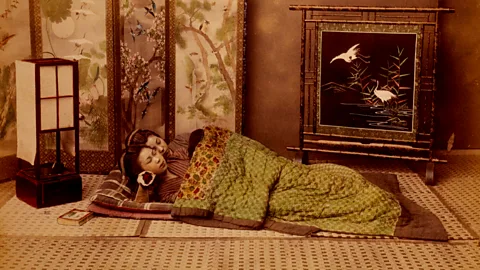 Getty Images
Getty ImagesBy contrast, in Japan, firm, low futons and shikibutons –that are foldable and can be stored out of sight – align with a taste for more minimalist interiors. In China, there's a tradition for kang beds that incorporate a platform with a brick-lined hollow where hot coals are placed to keep the bed warm. And India has its charpai beds – a wooden frame topped with a rope surface where people sleep without bedlinen to facilitate ventilation. Hammocks are particularly popular in Central and South America. Made of sisal, they help provide those sleeping in them protection from insect stings and animal bites.
One custom from Scandinavia of individual duvets used by couples is catching on in Britain. "We've seen an increase in demand for two single duvets, so a couple can have their own bedding like Scandinavians do," says Hanley. "This means you can also have different weights of duvet depending on personal preferences. We tried this at home when I was pregnant and especially hot at night, and it saved a lot of arguments."
The growth of the bedding sector in the West, driven by a desire for greater aesthetic choice, also begs the question of whether colours and patterns affect quality of sleep. "With the advent of social media and people sharing images of their homes online, our homes have become extensions of our personal style," says Hanley. "In recent years we've seen customers mixing and matching bedlinen to create totally unique looks."
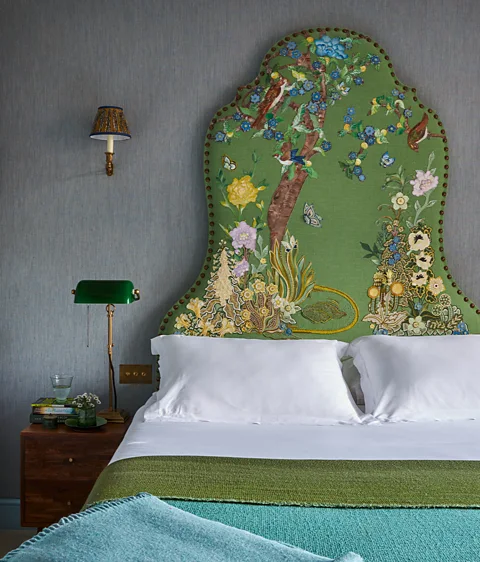 Natasha Hulse
Natasha Hulse"I believe that expressing individual preferences that feel true to you is the most impactful way to create a room you feel happy to retire to at night," says Hanley. Others feel muted colours encourage good sleep. "Generally it's a good idea to keep the bedroom environment calm, and that may influence choice of colour and pattern," says Dr Hare.
Sumptuously upholstered headboards, which both make a strong design statement and add comfort, are becoming increasingly popular. "I use the fabrics found in a room when creating my headboards to create a harmonious balance," says Natasha Hulse who creates headboards intricately embroidered with nature-inspired motifs. "This creates softness which is vital for us to relax. We operate in an overstimulated world so there has never been more of a demand to feel lured into our bedroom to recharge ourselves."
If you liked this story, sign up for The Essential List newsletter – a handpicked selection of features, videos and can't-miss news delivered to your inbox every Friday.
